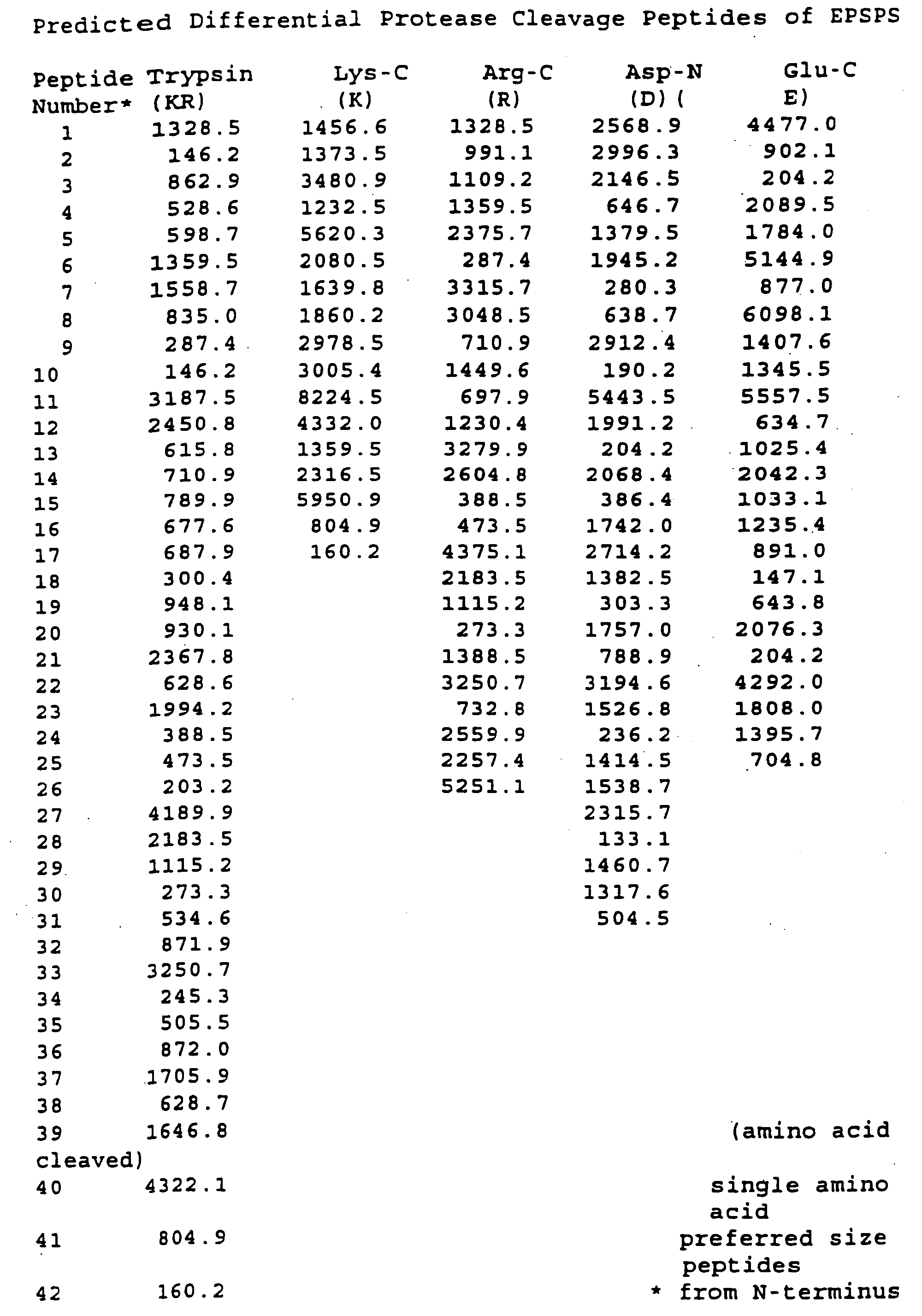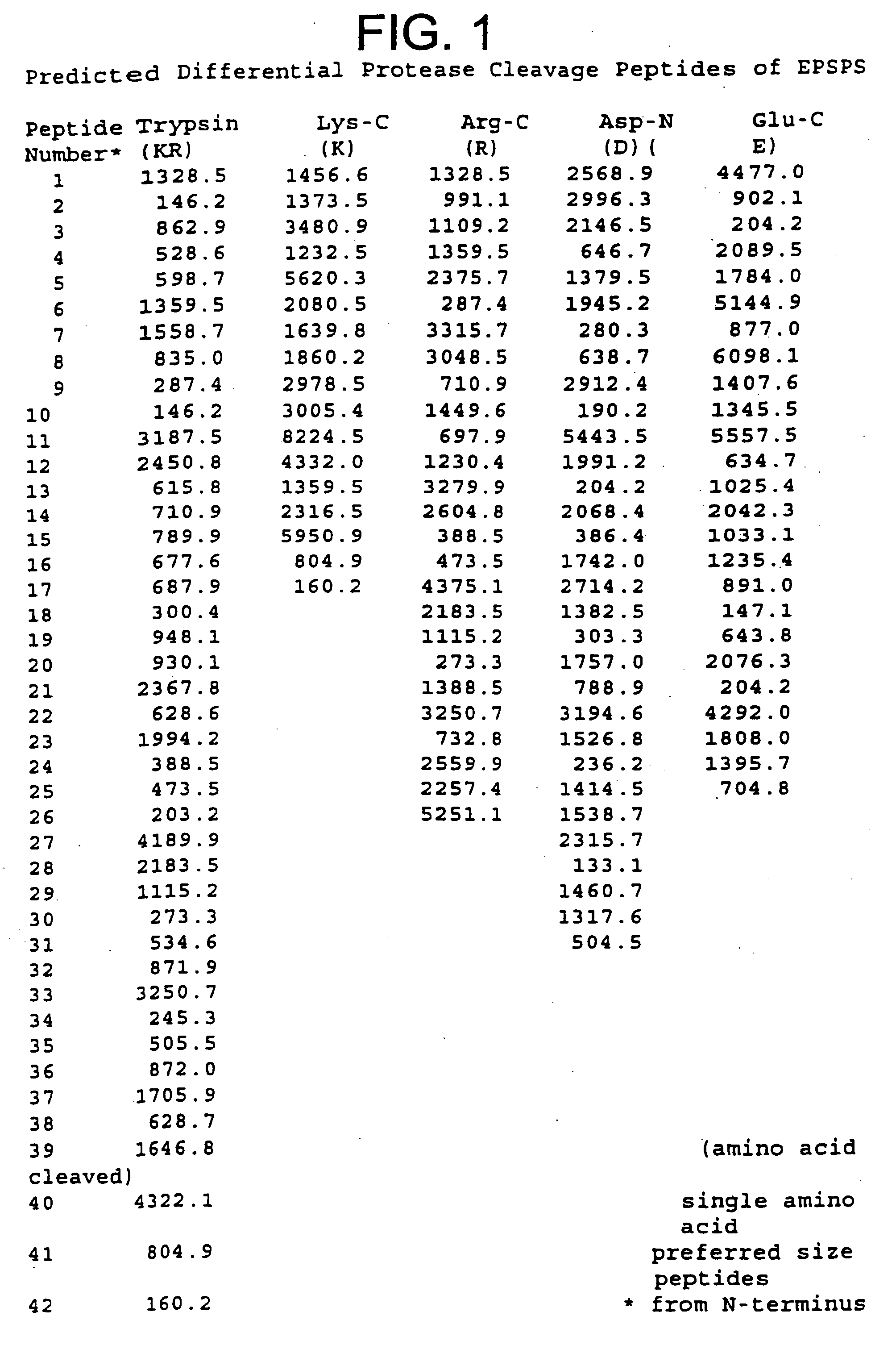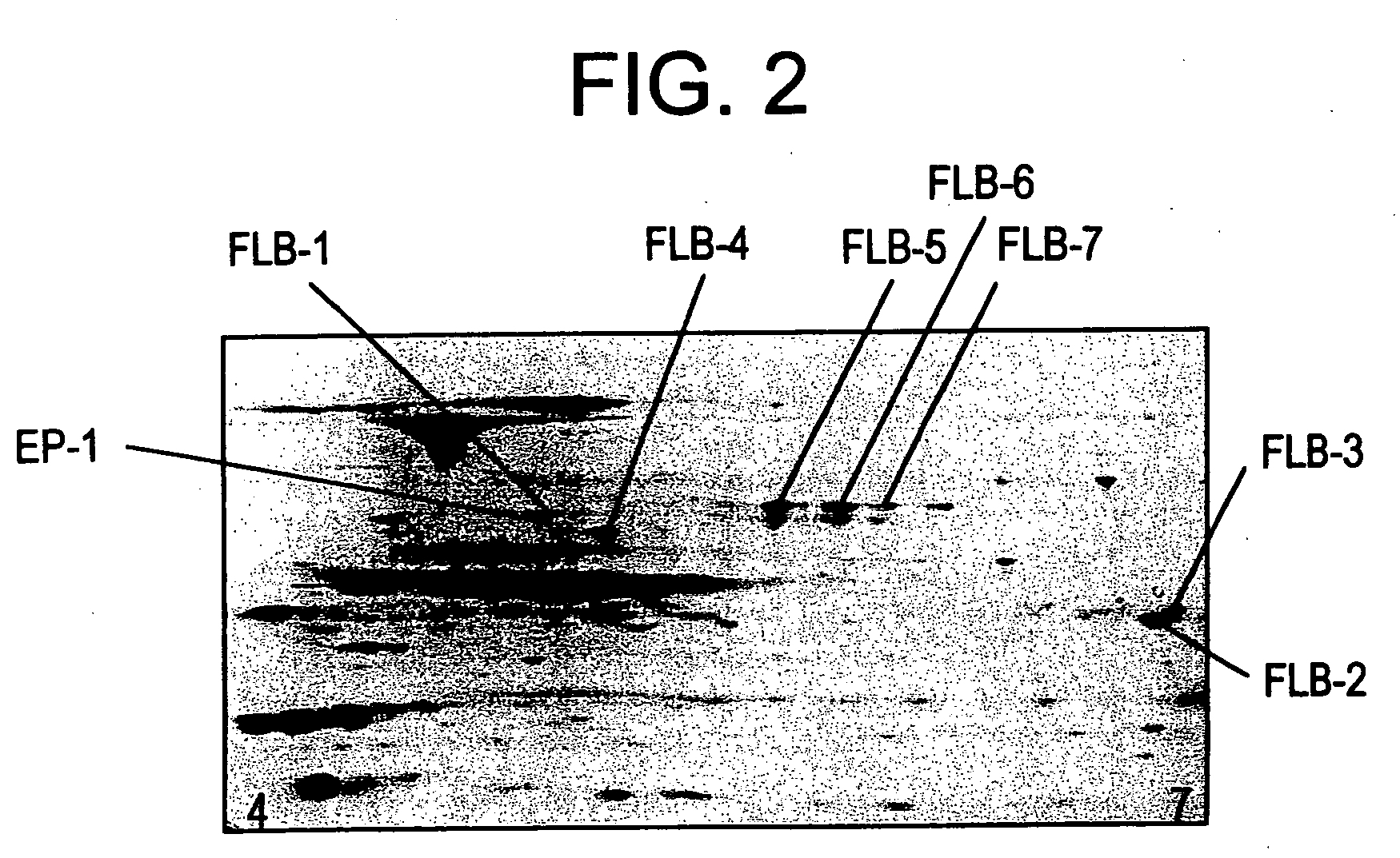Methods for mass spectrometry detection and quantification of specific target proteins in complex biological samples
a mass spectrometry and target protein technology, applied in the field of mass spectrometry detection and quantification of specific target proteins in complex biological samples, can solve the problems of difficult to obtain accurate quantitative information concerning the levels of identified proteins and the levels of site-specific or other modifications of individual protein molecules, and the development of an elisa for a target protein is a particularly laborious and lengthy task, and achieves rapid and sensitive detection, the effect of increasing the reliability of the diagnostic results obtained
- Summary
- Abstract
- Description
- Claims
- Application Information
AI Technical Summary
Benefits of technology
Problems solved by technology
Method used
Image
Examples
example 1
Predicted Proteolytic Cleaveage of 5-enolpyruvylshikimate-3-phosphate Synthase Present in Genetically Modified Plants
[0091] For those proteins that correspond to genes that have been cloned and sequenced, such as for 5-enolpyruvylshikimate-3-phosphate synthase (EPSPS), its amino acid sequence can be readily deduced from the DNA sequence. The deduced amino acid sequence of EPSPS was subjected to theoretical or in silico protease digestion using 5 distinct proteases. Three of the proteases cleave at basic amino acid sites (trypsin, Arg-C, Lys-C) and the two other proteases at acidic sites (Asp-N and Glu-C). Arg-C and Lys-C cleave at the carboxy-terminus of arginine and lysine residues, respectively. Trypsin cleaves at two amino acid sites, lysine and arginine residues. Asp-N cleaves at amino-terminus of aspartic residues while Glu-C cleaves at the carboxy-terminus of glutamic residues.
[0092] In FIG. 1, the peptides cleaved by the five proteases are listed from the amino-terminus to ...
example 2
Enrichment of 5-enolpyruvylshikimate-3-phosphate Synthase EPSPS from Soybean Seeds
[0093] Enrichment of 5-enolpyruvylshikimate-3-phosphate synthase from transgenic soybean seeds.
[0094] The initial step for the detection and quantitation of a GM protein in plants is to obtain a protease digest profile of peptides for the protein of interest. The protein may be available in large amounts from a recombinant source such as bacteria or insect (baculovirus expressed) cells. Alternatively, transgenic plants expressing sufficient levels of the protein may provide the material required for peptide profiling. For EPSPS, the latter source was used as the source for peptide profiling.
[0095] The plant material was subjected to a series of enrichment protocols for the identification of EPSPS and was preliminarily identified when comparing colloidal stained 2-D gel patterns of proteins isolated from non-transformed and transgenic soybean seeds expressing EPSPS.
[0096] Ten seeds were ground in a ...
example 3
Identification of Diagnostic Marker Peptides for 5-enol-pyruvylshikimate-3-phosphate Synthase and beta-conglycin in Soybean Seeds
[0104] Identification of EP-1 and FLB-1 FLB-7 diagnostic protein markers.
[0105] The eight protein spots detectable on a 2-D gel corresponding to EP-1 and FLB-1 through FLB-7 were excised, proteolytically cleaved, analyzed and identified as described below.
[0106] Identical protein spots from 1-3 gels were excised manually and pooled. The gel pieces were macerated and destained with 25 mM ammonium bicarbonate / 50% acetonitrile in a 1.5 mL microfuge tube with vigorous shaking for 30 minutes. The blue-tinted destaining solution was removed and discarded with a fine-tip pipette. The destaining step was repeated until the stain was removed from the gel pieces. The gel pieces were dried under vacuum for 10 to 15 minutes. Proteins were digested overnight at 37° C. in a total volume of 25 μL of sequence-grade, modified trypsin (Roche Diagnostics) at a final prote...
PUM
 Login to View More
Login to View More Abstract
Description
Claims
Application Information
 Login to View More
Login to View More - R&D
- Intellectual Property
- Life Sciences
- Materials
- Tech Scout
- Unparalleled Data Quality
- Higher Quality Content
- 60% Fewer Hallucinations
Browse by: Latest US Patents, China's latest patents, Technical Efficacy Thesaurus, Application Domain, Technology Topic, Popular Technical Reports.
© 2025 PatSnap. All rights reserved.Legal|Privacy policy|Modern Slavery Act Transparency Statement|Sitemap|About US| Contact US: help@patsnap.com



